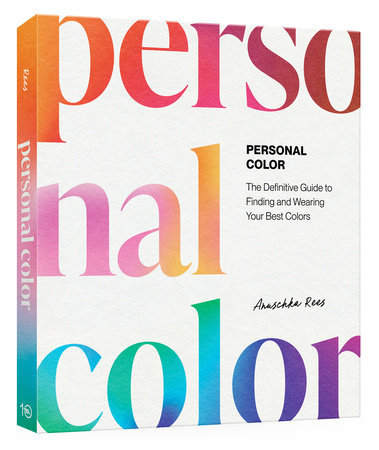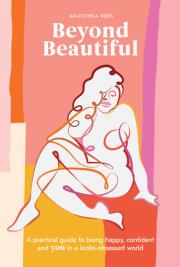IntroductionWhy Some Colors Look Better On You Than OthersIf you’ve ever gotten dressed and ready to go out with friends, or shared clothes with someone, you know that the same color can look striking on one person but off on another. The same exact shade can make one person look fresh and glowy—like they’ve just spent a week at a luxe Mediterranean wellness resort—but completely wash out another.
Have you ever wondered why that is? Why does your friend’s charcoal coat look so chic on her but all shades of dull on you? Why can some people pull off bright crimson lipstick on a Tuesday, while others look borderline clownlike after a second layer of tinted lip balm?
The answer is: color theory. Or, more specifically, color harmony.
Color theory is the art and science of colors—their properties, how they can be mixed, and how we perceive them. Color harmony is a key field within color theory that explores why to the human eye certain shades look better together than others. The principles of color theory and color harmony are used by artists, designers, and other creatives around the world. Illustrators use them to select a palette for their artwork, filmmakers to calibrate the mood of their scenes, and art directors to create eye-catching ads for their clients.
Do not mistake the principles of color harmony for societal beauty standards. They were not created by corporations and are not inherently rooted in sexist gender roles. Like many other design principles, such as symmetry and balance, they were often discovered by artists who studied natural phenomena to figure out what makes them so aesthetically pleasing—and how to re-create that effect in their work.
Chances are, you are already using aspects of color theory in your everyday life. When you pick up flowers from the farmers’ market, for example, and try to imagine which ones will look best on your kitchen counters. When you dial up the saturation and contrast of your pics before posting them on social media or sending them to someone. When you use peach-hued concealer to correct circles under your eyes, and even when you’re adjusting the brightness level of your computer screen. All involve principles of color theory (how colors work) and color harmony (how two or more shades look next to each other).
And in this book, we’ll use those same principles to figure out which shades best accentuate your unique color essence. What you do with this information is up to you: Self-expression and personal taste always trump color harmony. Use this book to explore the world of color and experiment just like artists do—color theory is just one of many creative tools in their tool belt.
What Is Color Analysis?Color analysis is a framework that shows people which shades best harmonize with their skin tone, hair, and eyes. It was popularized in the 1980s by the mega-bestseller
Color Me Beautiful, written by stylist and image consultant Carole Jackson. The book introduced four types: Spring, Summer, Autumn, and Winter, and recommended a different palette for each. Whether Carole Jackson really was the first to come up with the system has been the subject of debate. Some credit Hollywood stylist Suzanne Caygill, who is said to have created custom palettes for her clients that were named after seasons starting in the 1950s.
But the idea that one’s complexion, hair, and eyes have an influence on the colors that suit them precedes Caygill too: In 1928, for example, a little booklet titled
Charts of Becoming Colors featuring “correct and fashionable colors” was all the rage. Artists also began using seasons to characterize palettes long before
Color Me Beautiful hit the scene. Derived from the hues of landscapes (in the Northern Hemisphere), fall tends to be associated with warm and earthy colors and winter with icy, cool shades. Spring is characterized by delicate shades of blossoming flowers, and summer by either vibrant brights or the softer pastels of a hazy summer’s day.
As a millennial, I was not around for the original craze surrounding color analysis, but my mom—a fashion-conscious twentysomething at the time—was part of the generation whose entire approach to fashion and beauty was shaped by terms and concepts from
Color Me Beautiful.
I had heard my mom use seasons as adjectives before (“that’s a Winter blue”), but it wasn’t until I found myself in a major preteen crisis that I came to understand what she was talking about. It was the early aughts and, for a few months, no self-respecting eighth grader would come to school without black eyeliner and flat-ironed hair. I had the hair part down but could not understand why all of my friends looked so incredibly cool with their kohl-rimmed eyes while I looked like a ghost child with Sharpie on her face. One day—after I requested to dig into her stash of makeup since my liners “weren’t working”—my mom said, “Well, of course black’s not going to suit you, you’re a Spring type.” She eventually handed me a worn paperback that had loose pages poking out and notes scribbled all over the margins. And so I was introduced to the great big world of seasonal color analysis.
Since the 1980s, a lot has happened in that world:
Color Me Beautiful expanded its framework from four to twelve seasons, and social media introduced millions of people to color analysis. That renewed popularity has muddied the waters quite a bit. The sheer wealth of often conflicting information can make the whole concept seem incredibly complex, when, in reality, it’s quite simple.
Why is there so much conflicting information in the first place? Because color analysis originated at a time when expert knowledge (and expert status) was still very much king, and people were used to trusting professional advice. A product of its time,
Color Me Beautiful is prescriptive without ever revealing its formula: Readers are told how to find their season and which colors to wear, but Carole Jackson never explains why that palette supposedly suits them—or, really, much else. Without a clear formula or framework for readers to refer back to, it’s no wonder that over time people have filled in the gaps themselves with a mix of misconceptions, outdated fashion rules, and general style advice.
Now, it’s not at all a bad thing that concepts develop over time or even branch out into something completely different. Some color analysts work with sixteen, twenty-four, or even thirty-six seasons. Some take into account your style, your personality, or your aura. As long as you know what the advice you are getting is based on, no system of color analysis is more or less valid than another.
Copyright © 2025 by Anuschka Rees. All rights reserved. No part of this excerpt may be reproduced or reprinted without permission in writing from the publisher.
















